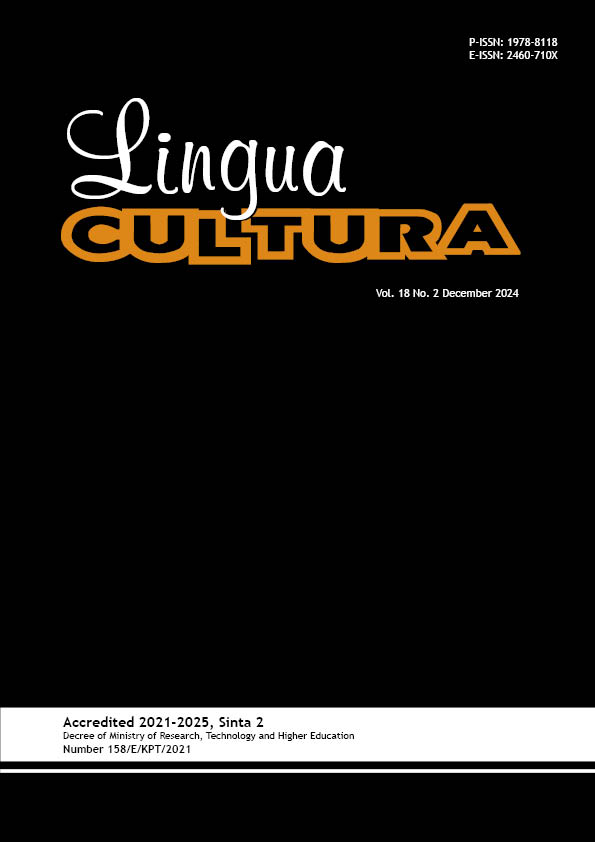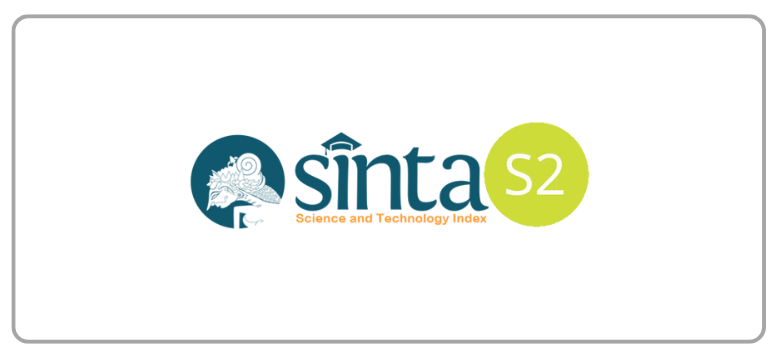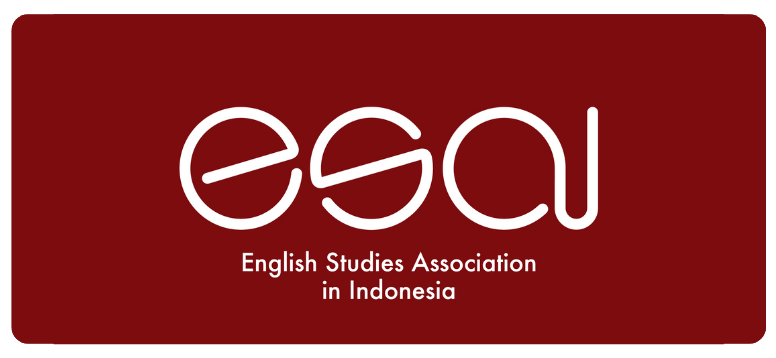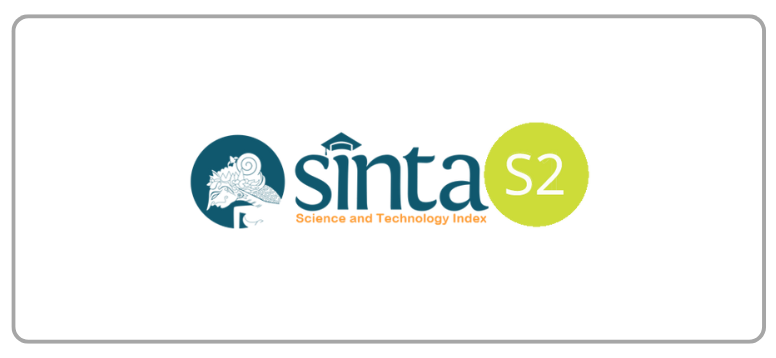The Translation of Indonesian Proverbs into English Equivalents
DOI:
https://doi.org/10.21512/lc.v18i2.12070Keywords:
translation, Indonesian proverbs, English equivalentAbstract
Translating Indonesian proverbs into their English equivalents reflects the complicated interaction between language, culture, and meaning. The research objective was to identify the different forms of Indonesian proverbs with equivalents in the English language and the cultural similarities and differences between Indonesian proverbs and their English equivalents. This research was conducted using qualitative descriptive research methodology and employed document analysis. The data were collected in the form of documents from "Himpunan Lengkap Peribahasa Nusantara, Kamus Peribahasa, A Complete Collection of English Proverb, Proverb from Around the World, and Oxford Dictionary of Proverb. From source texts with lexical elements relating to Indonesian culture terms, this research obtained another 57 Indonesian proverbs. The data was then analyzed by comparing the Indonesian proverb with its English version. The findings indicate that several Indonesian proverbs have equivalents in English with identical meanings. Nevertheless, there are dissimilarities in sentence and proverb classifications, as well as structural forms of proverbs, under the influence of factors such as history, religion, values, social organization, and language. This research differs from previous reserch, which focused more on meaning or word-for-word translation issues. It examines in detail the way cultural elements like history and religious symbols affect the expression of similar ideas in these two different language traditions. This new approach uncovers previously unconsidered patterns in the manifestation of Indonesian collectivist values and English individualist values in proverbs. This helps us further understand issues related to intercultural communication and translation studies. One of the recommendations is to conduct further research on EFL students' use of Indonesian proverbs and their English equivalents.
References
Abbas, S. R. . (2010). Kamus peribahasa. Penerbit Angkasa.
Adijaya, N. (2020). Tolerance values representation in Indonesia eectronic EFL textbook. Jurnal Pendidikan Bahasa, 9(2), 143-152. https://doi.org/10.31571/bahasa.v9i2.1868.
Admizal, I. (2021). Takdir dalam Islam (Suatu kajian tematik). Ishlah: Jurnal Ilmu Ushuluddin, Adab Dan Dakwah, 3(1), 87-107. https://doi.org/10.32939/ishlah.v3i1.56.
Aji, A. F., Winata, G. I., Koto, F., Cahyawijaya, S., Romadhony, A., Mahendra, R., Kurniawan, K., Moeljadi, D., Prasojo, R. E., Baldwin, T., Lau, J. H., & Ruder, S. (2022). One country, 700+ languages: NLP challenges for underrepresented languages and dialects in Indonesia. Proceedings of the Annual Meeting of the Association for Computational Linguistics, 1, 7226-7249. Association for Computational Linguistics. https://doi.org/10.18653/v1/2022.acl-long.500.
Alam, S. L. (2020). Many hands make light work: towards a framework of digital co-production to co-creation on social platforms. Information Technology and People, 34(3), 1087-1118. https://doi.org/10.1108/ITP-05-2019-0231.
Asmi, N., Jazadi, I., & Solihin, S. (2023). Using picture-based Sumbawa proverbs to increase students’ ability in explaining social Phenomena in English. JIIP - Jurnal Ilmiah Ilmu Pendidikan, 6(2), 1044-1051. https://doi.org/10.54371/jiip.v6i2.1597.
Barbashina, V. (2020). The roaring lion and the horse of God: The enigma of the Evangelist portraits in the harkness gospels (New York public library, MA 115). Manuscript Studies: A Journal of the Schoenberg Institute for Manuscript Studies, 5(2), 284-311. https://doi.org/https://doi.org/10.1353/mns.2020.0015
Barnes, A. D., Weigelt, P., Jochum, M., Ott, D., Hodapp, D., Haneda, N. F., & Brose, U. (2016). Species richness and biomass explain spatial turnover in ecosystem functioning across tropical and temperate ecosystems. Philosophical Transactions of the Royal Society B: Biological Sciences, 371. https://doi.org/10.1098/rstb.2015.0279
Bastola, G. K. (2023). Significance of translation studies in language education: A perspective of post-graduate level students. Dristikon: A Multidisciplinary Journal, 13(1), 64-82. https://doi.org/https://doi.org/10.3126/dristikon.v13i1.56055.
Beal, J. (2021). Beauty and the beast: The value of teaching fairy tales to university students in the 21st Century. International Journal of English and Cultural Studies, 5(1). https://doi.org/10.11114/ijecs.v5i1.5207
Budiatmaja, R., Lamsir, S., & Sianipar, R. (2023). Dimensi hidup berkenan kepada Allah menurut Roma 12:1-8 dan etika bertanggung jawab. Vox Dei: Jurnal Teologi Dan Pastoral , 4(1), 21-36.
Daşkın, N. C., & Hatipoğlu, Ç. (2019). A proverb learned is a proverb earned: Proverb instruction in EFL Classrooms. Eurasian Journal of Applied Linguistics, 5(1), 57-88. https://doi.org/https://doi.org/10.32601/ejal.543781.
Djumanto, Lazuardi, M. E., Zainudin, I. M., & Ridarwati, S. (2021). The role of marine-protected areas as a life support for fishery communities: Indonesian perspective. In M. N. Suratman (Ed.), Protected Area Management - Recent Advances (pp. 1-22). InTech Open. https://doi.org/https://doi.org/10.5772/intechopen.100214.
Ermiana, I., Sutajaya, I. M., Suja, I. W., & Fauzi, A. (2023). Meta-synthesis: Tri Hita Karana a philosophy of harness and life harmony. Progres Pendidikan, 4(2), 109-116. https://doi.org/10.29303/prospek.v4i2.348.
Fasial, A. (2023). Hubungan Islam dengan sistem peradilan di Indonesia. Warta Dharmawangsa, 17(2), 632-649. https://doi.org/10.46576/wdw.v17i2.3177.
Ghafoori, M., & Elyas, T. (2022). Exploring connotative meanings and metaphors of Saudi animal Proverbs: A semantic and pragmatic analysis. Global Journal of Human-Social Science, 22(C1), 55-66. https://doi.org/10.34257/gjhsscvol22is1pg55.
Gichohi, S. N., & Subiyanto, A. (2022). A comparative study of Kikuyu Proverbs and its English equivalents on the role and position of women: A natural semantic metalanguage perspective. Journal of Languages, Linguistics and Literary Studies, 2(2), 71-79. https://doi.org/10.57040/jllls.v2i2.152.
Gleason, N. (1992). Proverbs from around the World. Carol Publishing Group.
Grigoryan, G., Ren, W., & Ning, H. (2023). The associative characteristics of linguophilosophical concept “Freedom” in English, Armenian and Chinese linguocultures. Wisdom, 26(2), 154-164. https://doi.org/10.24234/wisdom.v26i2.995.
Grzymala-Busse, A. (2020). Beyond war and contracts: the medieval and religious roots of the European state. Annual Review of Political Science, 23(1), 19-36. https://doi.org/https://doi.org/10.1146/annurev-polisci-050718-032628.
Guillén-Yparrea, N., & Ramírez-Montoya, M. S. (2023). Intercultural competencies in higher education: A systematic review from 2016 to 2021. Cogent Education, 10(1). https://doi.org/10.1080/2331186X.2023.2167360.
Handayani, R., Narimo, S., Fuadi, D., Minsih, M., & Widyasari, C. (2023). Preserving local cultural values in forming the character of patriotism in elementary school students in Wonogiri Regency. Journal of Innovation in Educational and Cultural Research, 4(1), 56-64. https://doi.org/10.46843/jiecr.v4i1.450.
Haryanti, D. (2017). Draw me a Proverb: Enhancing writing skills through wisdom. UAD TEFL International Conference, 1, 179. https://doi.org/10.12928/utic.v1.165.2017.
Indriyani, D., Komalasari, K., Malihah, E., & Fitriasari, S. (2023). Promoting civic engagement among students in the preservation of local culture during a time of disruption. Jurnal Civics: Media Kajian Kewarganegaraan, 20(1), 104-113. https://doi.org/10.21831/jc.v20i1.58790.
Ketaren, S. V., & Pakpahan, E. M. B. (2021). Metaphorical expression used in poetry in English textbook entitled “Pathway To English.” PROJECT (Professional Journal of English Education), 4(3), 469-479. https://doi.org/10.22460/project.v4i3.p469-479.
Kimsesiz, F. (2021). Investigating EFL teachers’ perceptions of teaching English proverbs in EFL classes: A cross-cultural study. RumeliDE Dil ve Edebiyat Araştırmaları Dergisi, 24, 1195-1210. https://doi.org/https://doi.org/10.29000/rumelide.997593.
Kornieva, S. (2021). The frequency of functioning of verbal and structural forms in English proverbs. Humanities Science Current Issues, 2(37), 96-102. https://doi.org/10.24919/2308-4863/37-2-15.
Kristyanto, T. H. W., Sianipar, R. P., Nugroho, A. E., & Destyanto, T. T. Y. R. (2022). The Role of Religions on Politics, Economics, and Social Class in the Society: A Phenomenological Study. Proceedings of the 2nd International Conference on Social Science, Humanity and Public Health (ICOSHIP 2021), 645, 16-19. https://doi.org/10.2991/assehr.k.220207.003
Kurniawan, D., Jaenullah, J., Jannah, S. R., Setiawan, D., & Mispani, M. (2023). Strategy for increasing the learning Qur’an Hadits quality for the students’ religious character. Jurnal As-Salam, 7(1), 57-71. https://doi.org/10.37249/assalam.v7i1.583.
Lauhakangas, O. (2015). Categorization of proverbs. In H. Hrisztova-Gotthardt & M. A. Varga (Eds.), Introduction to Paremiology: A Comprehensive Guide to Proverb Studies. Walter de Gruyter GmbH & Co KG.
Lubis, S. (2018). The equivalence and nonequivalence of Proverbs across cultures (Indonesian and English). International Journal of English Linguistics, 8(4), 253-261. https://doi.org/10.5539/ijel.v8n4p253.
Macionis, J. J. (2019). Society: The basics (16th Ed.). Pearson.
Mansyur, F. A., Nuryadin, C., Sahril, & Amayliya, W. O. A. (2021). Character education values in Indonesian proverbs. ELS Journal on Interdisciplinary Studies in Humanities, 4(3), 346-354. https://doi.org/https://doi.org/10.34050/elsjish.v4i3.18017.
Mansyur, F. A., & Suherman, L. A. (2020). The function of proverbs as educational media: Anthropological linguistics on Wolio proverbs. ELS Journal on Interdisciplinary Studies in Humanities, 3(2), 271-286. https://doi.org/10.34050/els-jish.v3i2.10505.
Manurung, K. (2022). Cara pandang kaum Pentakostal mencermati pelayanan Petrus sang tokoh kontraversi. DIEGESIS: Jurnal Teologi Kharismatika, 5(2), 71-83.
Meisuri, M., & Bahri, S. (2019). The use of Minangkabau proverbs of contrast meanings by Minangkabau society in Medan. Budapest International Research and Critics in Linguistics and Education (BirLE) Journal, 2(4), 79-88. https://doi.org/10.33258/birle.v2i4.494.
Møller, J. (2019). Bringing the Church back in: ecclesiastical influences on the rise of Europe. Politics and Religion, 12(2), 213-226. https://doi.org/10.1017/S1755048318000822.
Mounadil, T. (2023). Strategies for translating idioms and proverbs from English into Arabic. British Journal of Translation, Linguistics and Literature, 3(2), 2-9. https://doi.org/10.54848/bjtll.v3i2.59.
Mubshirah, D., & Mulyadi. (2023). The synonym of meaning in Acehnese and Indonesian proverbs: Cognitive Semantic Analysis. RETORIKA: Jurnal Ilmu Bahasa, 9(1), 114-124. https://doi.org/https://doi.org/10.55637/jr.9.1.6213.100-113.
Muhammed, A. A. (2022). The religion of the Anglo-Saxons and its influence on literature and different aspects of life. Alustath Journal for Human and Social Sciences, 61(1), 605-616. https://doi.org/10.36473/ujhss.v61i1.1239.
Naylor, R. L., Battisti, D. S., Vimont, D. J., Falcon, W. P., & Burke, M. B. (2007). Assessing risks of climate variability and climate change for Indonesian rice agriculture. Proceedings of the National Academy of Sciences of the United States of America, 104(19), 7752-7757. https://doi.org/10.1073/pnas.0701825104.
Nugraha, D. S. (2023a). A semantic cognitive analysis of the conception and emotional implications of cheerfulness in Indonesian proverbs. International Journal of Social Science Humanity & Management Research, 2(11), 1195-1208. https://doi.org/10.58806/ijsshmr.2023.v2i12n07.
Nugraha, D. S. (2023b). Comparing the depiction of love in English and Indonesian proverbs: An analysis using cognitive semantics and the contrastive method. International Journal of Social Science and Human Research, 6(11), 6869-6887. https://doi.org/10.47191/ijsshr/v6-i11-41.
Nugraha, D. S. (2023c). Exploring the concept of joy in Indonesian and English proverbs utilizing cognitive semantics analysis and contrastive method. International Journal of Social Science Humanity & Management Research, 2(11), 1120-1136. https://doi.org/10.58806/ijsshmr.2023.v2i11n02.
Nugraha, D. S. (2023d). The facets and emotional connotations of the love-related proverbs in Indonesian. International Journal of Social Science and Human Research, 6(10), 6285-6296. https://doi.org/10.47191/ijsshr/v6-i10-68.
Nugraha, D. S. (2023e). The representation and emotional resonances of the joy in Indonesian proverbs. International Journal of Social Science Humanity & Management Research, 2(10), 1098-1108. https://doi.org/10.58806/ijsshmr.2023.v2i10n07.
Nugraha, D. S. (2023f). Uncovering the pedagogical propositions embedded in Indonesian proverbs through cognitive semantics analysis. International Journal of Innovative Research in Multidisciplinary Education, 02(11), 585-601. https://doi.org/10.58806/ijirme.2023.v2i11n07.
Nugraha, D. S. (2023g). Unveiling the heart of longing in Indonesian proverbs: Their components and mental connotations. International Journal of Social Science and Human Research, 6(12), 7500-7513. https://doi.org/10.47191/ijsshr/v6-i12-38.
Nurdiana, Hasan, M., Miranda, Ahmad, M. I. S., Kamaruddin, C. A., & Tahir, T. (2023). 7P marketing mix in processed farm products by urban farming businesses. International Journal of Social Science and Business, 7(3), 645-658. https://doi.org/10.23887/ijssb.v7i3.52978.
Nyame, J., & Tomekyin, C. (2018). Neological developments in Nzema proverbs. International Journal of Language & Literature, 6(2).
Oleneva, P. (2023). Conceptualization of money in English and Russian proverbs: A cognitive perspective. Proverbium, 40(1), 134-160. https://doi.org/10.29162/pv.40.1.349.
Panikker, M. J. (2020). Kātāla vēsa: On revisiting the hunter. Rupkatha Journal on Interdisciplinary Studies in Humanities, 12(4), 1-15. https://doi.org/10.21659/rupkatha.v12n4.04.
Porter, K., Jarrett, N., Addington-Hall, J., Corner, J., Davis, C., Duke, S., & Lathlean, J. (2012). ‘Many hands make light work’ or ‘too many cooks spoil the broth’? Achieving the tricky balance of appropriate involvement in palliative care for cancer. BMJ Supportive & Palliative Care, 2. https://doi.org/10.1136/bmjspcare-2012-000196.134.
Pradana, G. Y. K. (2023). The meaning of Pancasila in the tradition of Subak management: A reflection of Pancasila values in the Balinese venture for the next generation of food security. International Journal of Social Science and Human Research, 6(6), 3537-3543. https://doi.org/10.47191/ijsshr/v6-i6-41.
Pramoda, R., Indahyanti, B. V., Shafitri, N., Zulham, A., Koeshendrajana, S., Yuliaty, C., Kurniasari, N., Kurniawan, T., Muawanah, U., Hafsaridewi, R., Rosyidah, L., & Kuncoro, H. S. (2021). Fisheries management policy in Indonesia’s exclusive economic zone area. IOP Conference Series: Earth and Environmental Science, 869(1). https://doi.org/10.1088/1755-1315/869/1/012001.
Pratama, R. (2022). Macam-macam dialek bahasa Inggris dan potensinya dalam memunculkan kesalahpahaman pada komunikasi lintas budaya. Anuva: Jurnal Kajian Budaya, Perpustakaan, Dan Informasi, 6(4), 445-454. https://doi.org/10.14710/anuva.6.4.445-454.
Purwanto, M. R., Istiani, M., Hilda, H., Marazi, H., & Nudin, B. (2022). Islamic view towards environment preservation. KnE Social Sciences, 7(10), 11-15. https://doi.org/10.18502/kss.v7i10.11336.
Ray, J. (2013). A Compleat of English Proverb. Forgotten Books.
Reedy, J., Orr, R., Spicer, P., Blanchard, J. W., Hiratsuka, V. Y., Ketchum, T. S., Saunkeah, B., Wark, K., & Woodbury, R. B. (2020). Deliberative democracy and historical perspectives on American Indian/Alaska native political decision-making practices. Humanities and Social Sciences Communications, 7(16). https://doi.org/10.1057/s41599-020-0506-4.
Rikfanto, A. (2023). „Andere Länder, Andere Sitten: A comparative study of some German and Indonesian proverbs. Proverbium, 40, 161-188. https://doi.org/10.29162/pv.40.1.264.
Rivet, A. L. . (2024). Town and country in Roman Britain. Routledge.
Sadowski, R. F. (2020). Resources within spiritual and mystical Christian traditions for the care of earth—our common home. Studia Ecologiae et Bioethicae, 18(1), 43-53. https://doi.org/10.21697/seb.2020.1.05.
Saleem, A., Saira, & Deeba, F. (2022). Relationship between language and culture: A study of communication styles and social identities of post-graduates in a university. Pakistan Languages and Humanities Review, 6(2), 352-362. https://doi.org/10.47205/plhr.2022(6-ii)30.
Santosa, Y. B. P., & Irawan, H. (2023). Sejarah Perkembangan Makanan Indonesia Dari Abad Ke 10 Hingga Masa Pendudukan Jepang. Jurnal Penelitian Sejarah Dan Budaya, 9(1), 113-136. https://doi.org/10.36424/jpsb.v9i1.364.
Setiawan, M. R., & Wahyuningsih, S. (2023). The role of English in the business world for import-export entrepreneurs: Insight from the indonesian furniture industry. Scope: Journal of English Language Teaching, 8(1), 132-138. https://doi.org/10.30998/scope.v8i1.17938.
Siallagan, H., & Syuhada, O. (2023). The role of Pancasila in the formation of national and regional regulations. Journal of Law and Sustainable Development, 11(3), 1-18. https://doi.org/10.55908/SDGS.V11I3.711.
Siregar, I. (2021). The existence of culture in its relevance to the dynamics of globalization: Bahasa Indonesia case study. International Journal of Cultural and Religious Studies, 1(1), 33-38. https://doi.org/10.32996/ijcrs.2021.1.1.5.
Sopiansyah, I., & Inayah, R. (2021). The analysis of figurative language in “girl on fire” song lyrics by Alicia Keys. PROJECT (Professional Journal of English Education), 4(2), 208-215. https://doi.org/10.22460/project.v4i2.p208-215.
Speake, J., & Simpson, J. (2008). Oxford Dictionary of Proverb (6th Ed.). Oxford University Press.
Sudarsini, N. N. (2023). Pendidikan budi pekerti pada cerita sang Garuda dalam teks Ādiparwa. Padma Sari: Jurnal Ilmu Pendidikan, 2(2), 145-155. https://doi.org/10.53977/ps.v2i02.852.
Sudaryanto. (2015). Himpunan Lengkap Peribahasa Nusantara. Penerbit Sketsa.
Suriani, S., Afrina, T. D., & Febriani, W. (2023). Citra perempuan kolonial dalam kehidupan beragama di Sumatera Timur, 1870-1942. MUKADIMAH: Jurnal Pendidikan, Sejarah, dan Ilmu-Ilmu Sosial, 7(1), 223-234. https://doi.org/10.30743/mkd.v7i1.7042.
Swari, R. A., Nurhayani, I., & Tabiati, S. E. (2021). New Insights Into Balinese Proverbs: a Syntactic Perspective. Jurnal Kata, 5(1), 46-58.
Tayyara, A. R. (2020). The practicability of proverbs in teaching Arabic language and culture. Language Teaching Research, 26(4), 799-819. https://doi.org/10.1177/1362168819895253.
Tirmidi, Kanto, S., Hidayat, K., & Luth, T. (2021). The dynamic role of religious figures in the diffusion of community forest development: A Study of phenomenology on Madurese community in Probolinggo Regecny. AT-TURAS: Jurnal Studi Keislaman, 8(1), 101-116. https://doi.org/10.33650/at-turas.v8i1.2287.
Trilling, R. R. (2021). Old english literature: Language as history [Online Course]. The Teaching Company.
Usman, A. H., Abdullah, M. F. R., & Azwar. (2023). Does Islam tolerate other religions? A Quranic perspective. Al-Irsyad: Journal of Islamic and Contemporary Issues, 8(1), 1003-1013.
Utari, Z., Manaf, N. A., & Amir, A. (2020). The level of politeness in Indonesian speech act for Madrasah Aliyah students in multi-ethnic context. Proceedings of the 3rd International Conference on Language, Literature, and Education (ICLLE 2020), 120-125. https://doi.org/10.2991/assehr.k.201109.020
Wahyudi, A., Sartika, D., Heru Wismono, F., Erinda Ramdhani, L., Rosalina, L., Kusumaningrum, M., & Zakiyah, S. (2020). Investigating organizational and human resource capacity of village government: A case study in Kutai Kartanegara Regency. Policy & Governance Review, 4(2), 99-115. https://doi.org/10.30589/pgr.v4i2.267
Wahyuningsih, S., & Ziyana Untsa, F. (2023). English as business lingua franca: Examining the use of English in Indonesian online business. ELT-Lectura, 10(2), 96-104. https://doi.org/10.31849/elt-lectura.v10i2.13699.
Webster, G. (2016). The Roman invasion of Britain (2nd Ed.). Routledge.
Wiafe-Akenten, N. A. (2021). Contemporary use of proverbs in Akan news broadcast. African Social Science and Humanities Journal (ASSHJ), 2(3), 139-152. https://doi.org/https://doi.org/10.57040/asshj.v2i3.30.
Wu, J., Zhou, W., & Shao, B. (2023). On English proverb variation from the perspective of linguistic creativity. Frontiers in Psychology, 14, 1-9. https://doi.org/10.3389/fpsyg.2023.1213649.
Yakub, M., & Wiafe-Akenten, N. A. (2023). The structure and communicative import of selected proverbs in Nzema language and culture. Journal of Communication and Cultural Trends, 5(1), 40-66. https://doi.org/10.32350/jcct.51.03.
Zhang, X., & Lütge, C. (2023). Home culture and its effects on English as a lingua franca communication: Voices from Chinese students at a United Kingdom university. Frontiers in Psychology, 14, 1-9. https://doi.org/10.3389/fpsyg.2023.1057315.
Downloads
Published
How to Cite
Issue
Section
License
Copyright (c) 2024 Raju Kurniawan, Rachmawati, Delita Sartika

This work is licensed under a Creative Commons Attribution-ShareAlike 4.0 International License.
Authors who publish with this journal agree to the following terms:
a. Authors retain copyright and grant the journal right of first publication with the work simultaneously licensed under a Creative Commons Attribution License - Share Alike that allows others to share the work with an acknowledgment of the work's authorship and initial publication in this journal.
b. Authors are able to enter into separate, additional contractual arrangements for the non-exclusive distribution of the journal's published version of the work (e.g., post it to an institutional repository or publish it in a book), with an acknowledgment of its initial publication in this journal.
c. Authors are permitted and encouraged to post their work online (e.g., in institutional repositories or on their website) prior to and during the submission process, as it can lead to productive exchanges, as well as earlier and greater citation of published work.
USER RIGHTS
All articles published Open Access will be immediately and permanently free for everyone to read and download. We are continuously working with our author communities to select the best choice of license options, currently being defined for this journal as follows: Creative Commons Attribution-Share Alike (CC BY-SA)


















